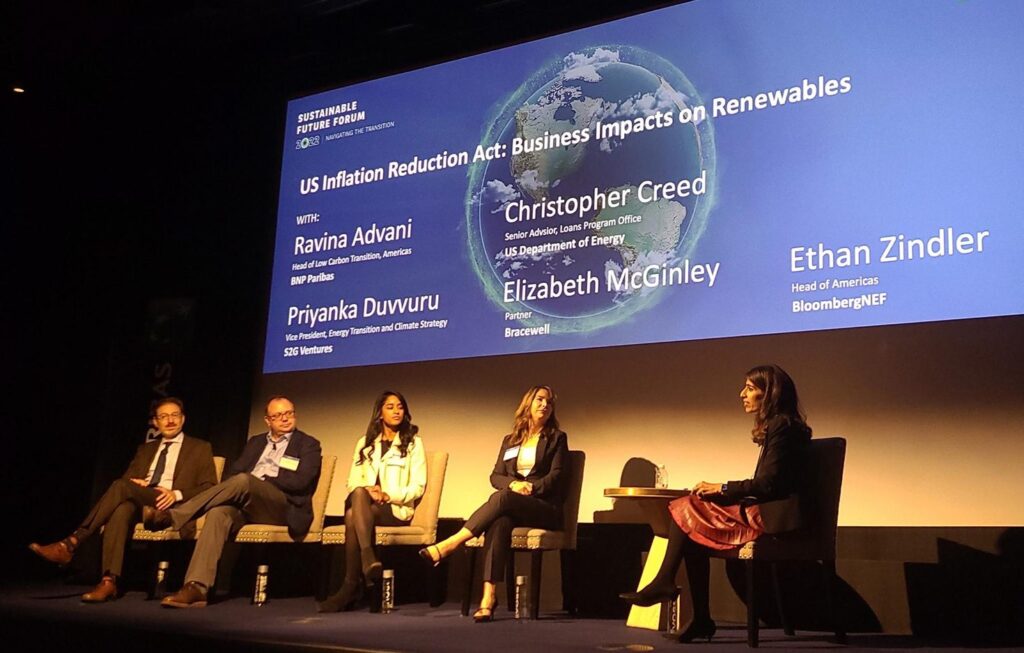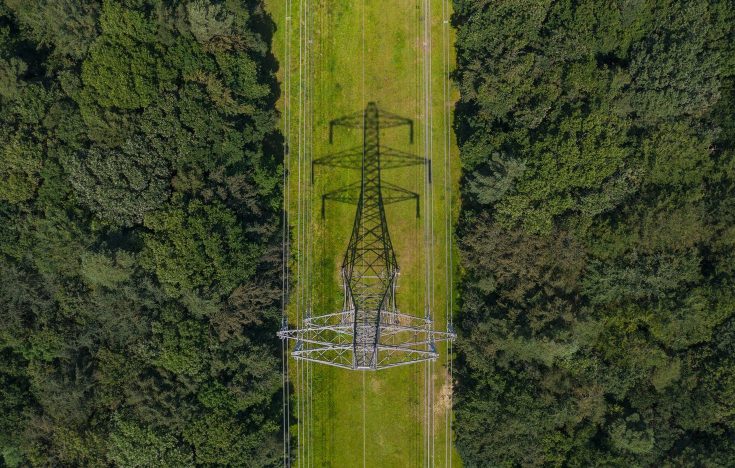Against the backdrop of macroeconomic challenges, geopolitical tensions, and the ongoing climate crisis, the energy transition still remains central to business strategy. Technology, policy, finance and collaboration will all be vital drivers in transitioning multiple sectors towards cleaner energy.
The recent BNP Paribas Sustainable Future Forum (SFF), gathered industry leaders from Sydney to Sao Paolo across 16 locations, revealing insightful corporate perspectives on the energy transition. Experts included senior executives from Hitachi, Jaguar Land Rover, Schneider Electric, Engie, Michelin, Northern Lights, Legrand, H2 Energy, Vinci and Holcim.
In Paris, William de Vijlder, Group Chief Economist at BNP Paribas set the scene in his keynote speech on the current paradigm shift in risk factors: “Clearly the world has changed significantly. We’ve moved from a rather short list of potential shocks to a much more comprehensive list. This will require risk-mapping and stress-testing, both at macro-level and at micro-level to inspire economic policy and business strategy”.
Addressing policy gaps
The vital role of policy and regulation in implementing the energy transition emerged as a key theme from speakers, with many noting that regulation provides certainty for business and investors when making financial and business decisions.
In particular, European-based industrials noted the importance of the European regulatory environment – including the EU Taxonomy – to reduce greenwashing risk, ensure greater alignment to common standards, and support disclosure on transition plans. Some experts also saw government investment as important for business decision-making, noting a valuable role for blending public and private sector capital to de-risk early transition technology investment.
A session from the New York leg of the event highlighted the Inflation Reduction Act (IRA) as a potential game changer in the US, with circa US$ 370 billion to become available towards clean energy sources. The IRA offers incentives for companies working in energy transition technologies like Carbon Capture Utilisation and Storage (CCUS) and green hydrogen in order to demonstrate their economic viability and scalability, as well as stimulate US-based manufacturing for clean energy technologies.

Financing the transition gap
In London, speakers underlined how transition targets that are aligned, transparent and validated by science can influence corporate decision-making, including investment and financing decisions.
Dr. Nina Seega, Research Director for Sustainable Finance at the Cambridge Institute for Sustainability Leadership (CISL) explained how according to her recent research study, commissioned by BNP Paribas with CISL, accelerating corporate targets will require significantly more investments: “a lot more money going towards deep decarbonisation of the hard to abate sectors”.
This change in financing dynamics can act as an innovation driver, as Dr Seega notes “the role of finance is expanding from purely diverting capital to finding innovative financial solutions in collaboration with the real economy.”
Scaling up technology and innovation
Technological innovation emerged as a key theme across the board, with many speakers noting its importance in driving energy efficiency and accelerating industry towards a net zero trajectory.
In the current inflationary context, corporate leaders shared examples of how they are scaling up energy efficiency using innovations throughout their operations, supply chain, buildings, and mobility ecosystem. Furthermore, commitments through KPIs related to energy efficiency are also becoming mainstream within sustainable financing frameworks, and can act as a further catalyst to the energy transition.
In London, speakers from Hitachi and Jaguar Land Rover explained how they are undergoing the deep decarbonisation of the manufacturing operations, and scaling up circular economy, with data as a key driver of their transitions through impact assessment, efficiency management, and analytics to increase transparency.
Tony Battle, Chief Information Officer of Jaguar Land Rover, which will offer full electric vehicles from 2024 and target to become 100% carbon net zero by 2039, highlighted the importance of digital data drivers as one of the key enablers to accelerate the sustainability journey at JLR: “Digital Data and analytics are enabling the accessibility and utilisation of data about everything we do as a company. The role of data and digital in an organisation is to facilitate and enable business transformation, which is underpinned by the desire for sustainability.”
The role of data and digital in an organisation is to facilitate and enable business transformation, which is underpinned by the desire for sustainability.
Tony Battle, Chief Information Officer, Jaguar Land Rover
Many speakers across the event agreed that the lack of reliable and affordable technology at scale remains an issue. However there were also several examples shared of transition technology innovations.
Carbon Capture Utilisation and Storage (CCUS) is essential for the net zero transition and could account for 19% of greenhouse gas emissions reductions. Northern Lights showcased its mission to develop the world’s first open-source CO2 transport and storage infrastructure that decarbonises industries in Northern Europe.
Green hydrogen also came under the spotlight. Expert leaders in Brussels, Milan and Frankfurt noted that investments in R&D and transportation, supported by regulation, are required for building a green hydrogen economy across the value chain and stimulating investment.
Regulators are increasing the target share of green hydrogen in the energy strategies. For example, in the EU there is an ambition to have 20 million tons per year by 2030, half of which would be domestic production volume.
Partnerships and knowledge sharing
Experts explained that collaboration needs to be at the core of the net zero economy, and partnerships are essential across the entire energy supply chain.
In the climate innovation space, several organisations shared cases of academic partnerships and clean tech collaborations which have been incubated, are scalable, and offer transferable applied research.
Finally, corporate leaders highlight employees, culture and talent development as key levers of the energy transition. Michelin shared its approach of participative innovation drawing on the ideas of its people to meet challenges of building a sustainable business.
How is finance scaling up energy transition?
BNP Paribas is at the forefront of mobilising finance to support the energy transition. Recent projects include:
- Dogger Bank Wind Farm: set to become the world’s largest offshore wind farm when all three phases are completed in 2026. BNP Paribas acted as financial advisor on the project, which will provide enough clean energy to power six million UK homes.
- Al Dhafra PV2: the largest single site solar plant in the world. BNP Paribas acted as lead bank on the deal, serving as sole Bookrunner, Documentation Bank, Mandated Lead Arranger and Hedge Provider
- Chile’s first corporate SLB: a US$500 million, 10-year sustainability-linked bond (SLB) for CMPC, a Chile-based global leader in the forestry, pulp, paper and packaging industries tackles GHG emissions and industrial water use
The recent creation of the Low-Carbon Transition Group (which brings together over 250 experts from across the bank to support clients on targeted sustainability advisory), demonstrates the increased momentum and resources BNP Paribas is investing in its people, strategy and client engagement on sustainable finance.
Explore more SFF 2022 insights and read our summary digest here.
Stay tuned for more insights from #BNPPSFF
